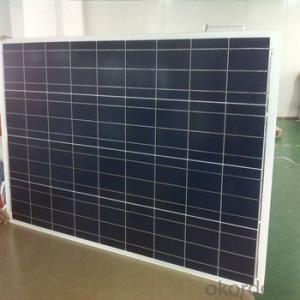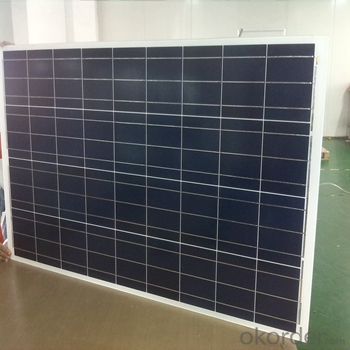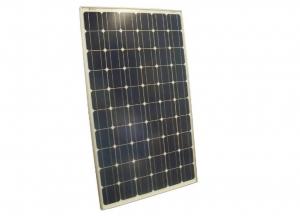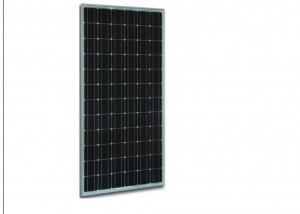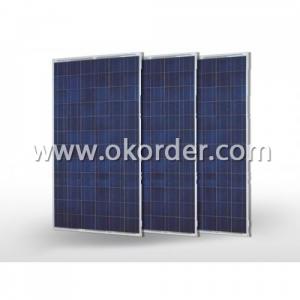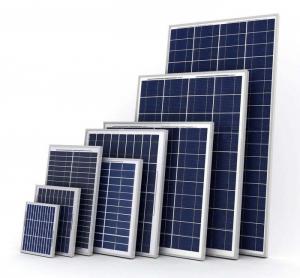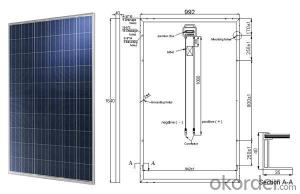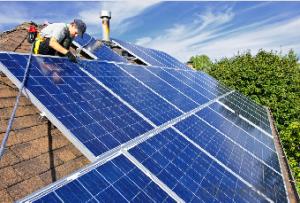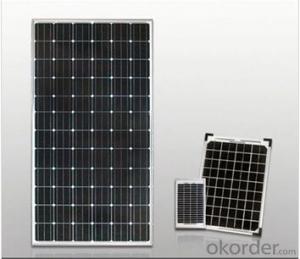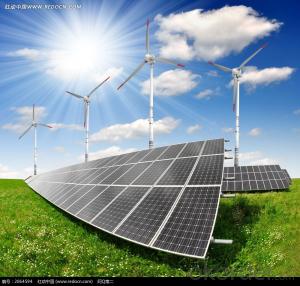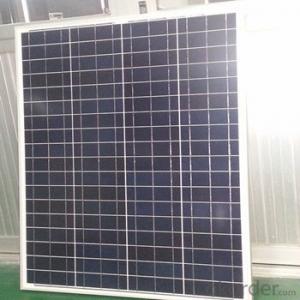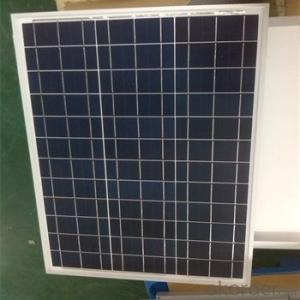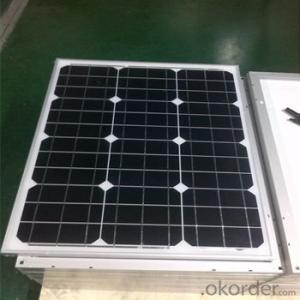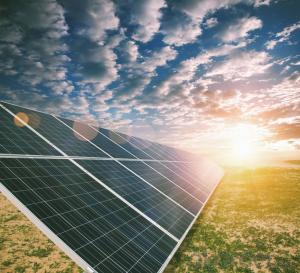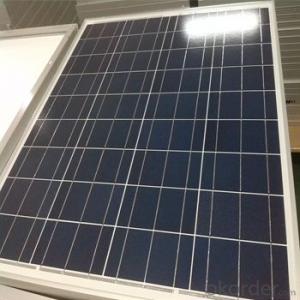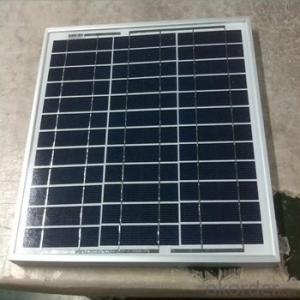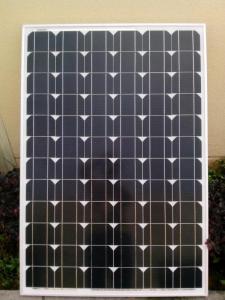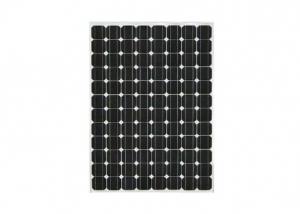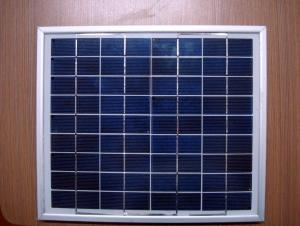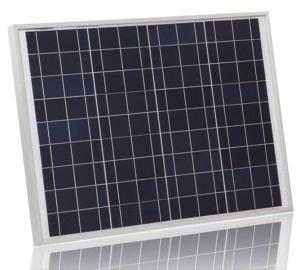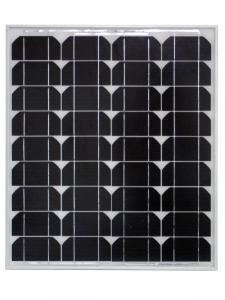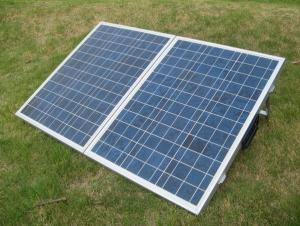Movable Polycrystalline Solar Module-120W CNBM Series
- Loading Port:
- Shanghai
- Payment Terms:
- TT OR LC
- Min Order Qty:
- 25 pc
- Supply Capability:
- 30000 pc/month
OKorder Service Pledge
OKorder Financial Service
You Might Also Like
Polycrystalline Solar Module-120w CNBM Series
High efficiency crystalline solar cell. Even if under the weak light, the solar module can produce maximum power output.
II Tempered glass (toughened glass): Anti-reflecting coating and high transmission rate glass increase the power output and mechanical strength of solar module.
III EVA and TPT: Using high quality EVA and TPT to prevent destroying and water.
IV AI frame: Without screw, rner connection. 6 holes on the frame can be installed easily.
V Junction box: Multi function junction box with water proof.
VI Long lifetime: ≥25 years; Less power decrease.
VII Good performance of preventing from atrocious weather such as wind and hails.
VIII Resisting moisture and etching effectively, not effected by geology.
IX The certificate issued by international authority: UL, TUV, IEC, CE.
Standard Test Conditions of Polycrystalline Silicon Solar Panel
The opto-electrical specifications shown below are stabilized values being measured at Standard Test Conditions, Irradiance: 1000W/m2, Spectrum: AM1.5 at 25°C, The info below is subject to manufacturing tolerances. Where appropriate minutes of measurement are available and are used for the dimensioning of the installation.
Advantages of Monocrystalline Silicon Solar Panel
• CNBM Solar performance guarantees for 25 years
• 12 years guarantee for workmanship
• Timeliness of delivery
• Quality Products certified (TÜV, UL, CE, ISO)
Specification
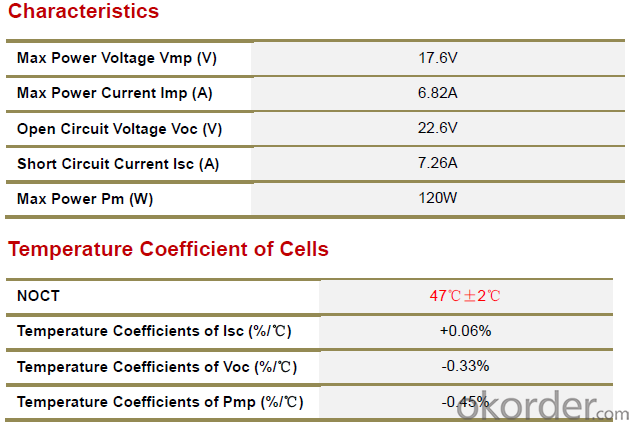
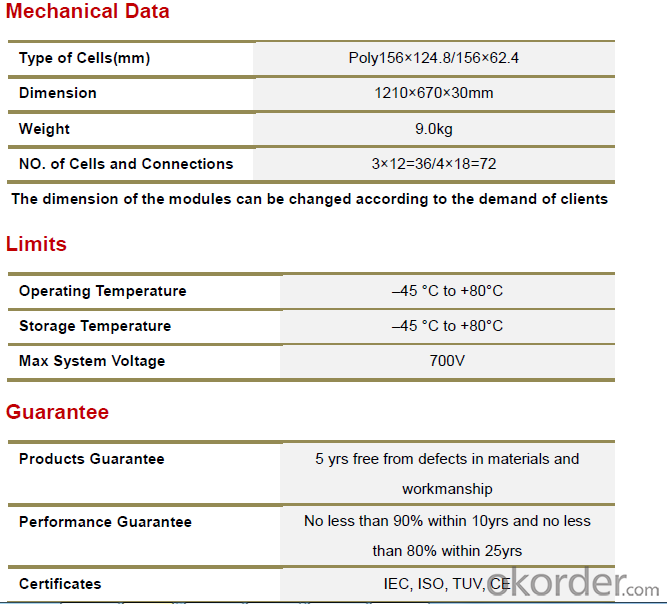
Certification

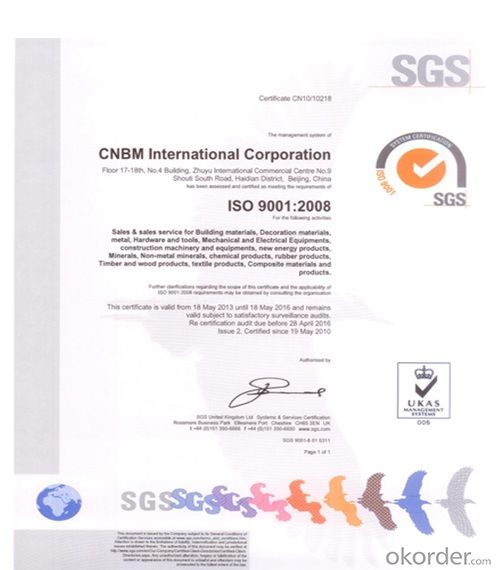
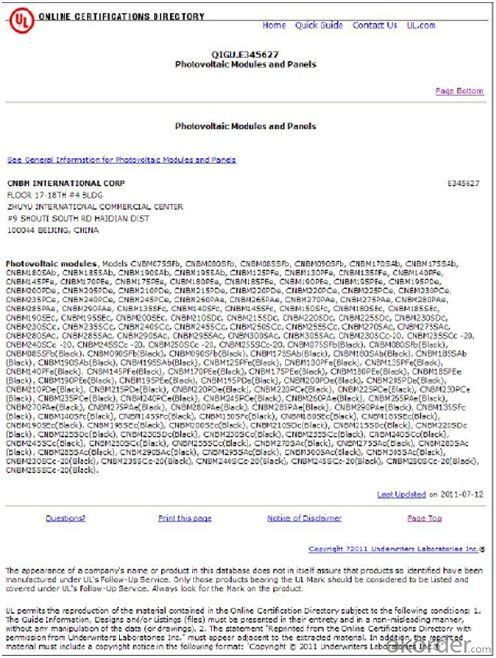
FAQ
We have organized several common questions for our clients,may help you sincerely:
①What price for each watt?
It depends on the quantity, delivery date and payment terms,
②What is your size for each module? Can you tell me the Parameter of your module?
We have different series of panels in different output, both c-Si and a-Si. Please take the specification sheet for your reference.
③Can you provide the peripheral products of the solar panels, such as the battery, controller, and inverter? If so, can you tell me how do they match each other?
Yes, we can, we have two companies for solar region, one is CNBM International, the other is CNBM engineering Co.
We can provide you not only the solar module but also the off grid solar system, we can also provide you service with on grid plant.
④What is your warranty system?
Our product performance guarantees for 25 years
• 12 years guarantee for workmanship
• Timeliness of delivery
• Quality Products certified (TÜV, UL, CE, ISO)
⑤How do you pack your products?
We have rich experience on how to pack the panels to make sure the safety on shipment when it arrives at the destination.
⑥ Can you do OEM for us?
Yes, we can.
⑦How long can we receive the product after purchase?
In the purchase of product within three working days, We will arrange the factory delivery as soon as possible. The pecific time of receiving is related to the state and position of customers.Commonly 7 to 10 working days can be served.
- Q: How long does it take to recoup the investment in solar panels?
- The time it takes to recoup the investment in solar panels varies depending on several factors such as the cost of the panels, installation expenses, local energy rates, and available incentives. On average, it typically takes around 6 to 10 years to recoup the initial investment. However, with decreasing panel costs and increasing energy savings, the payback period is continually improving, making solar panels a worthwhile long-term investment for many homeowners and businesses.
- Q: How much does it cost to replace a solar panel?
- The cost to replace a solar panel can vary depending on factors such as the type, size, and quality of the panel, as well as any additional installation costs. On average, the cost can range from a few hundred to several thousand dollars per panel. It is recommended to consult with a professional solar installer or company for an accurate estimate based on your specific needs.
- Q: Do they really save energy? Cut or almost eliminate your electricity bill, if so, how much?Do they have a reserve unit to save electricity that I don't use, to use when the sun is not out?Can it produce enough electricity to cool a house and keep lights and appliances runningLastly, how much are the panels are running for.
- Instead of paying for electricity, for the past three years I've actually ended up with a cheque from the power company believe it or not! :) I got some extremely cheap solar panels from this guide I read, I'll try and find a link for you.. that's one less thing to worry about during the recession I suppose! Haha The guide I used was here: tiny /solar789 my mum was the one who said I should take a look at it, since she's been using the techniques for donkey's years.
- Q: I want to add solar panels to my home. I was looking online and it seems there are so many different kinds! How does it hook up to the electrical grid? How much do I need for a 2000 sf home?
- This is still not a trivial project, although it is getting easier. The usual way to do this is to contact professional installers for free quotes. In the process of getting the quote, you'll learn what considerations go into sizing a solar system. They'll look at your energy usage, and also whether your house has a good, clear, south-facing roof that doesn't get shaded during the day. They'll also look at your electrical panel to see whether they can hook right up, or additional work is needed. There are rumors of companies like Akeena planning to sell panel kits in Home Depot (in areas that Akeena does not directly serve). The idea would be that a pro installer would pick up the kit there, but a highly skilled homeowner might be able to make it work. A permit will probably be required by your jurisdiction, but that's no different than applying for any other construction. And you'll have to inform your power utility in advance, which may or may not be routine, depending on how often people connect solar in your area. If you want to see how we connected our system, a link is below. I did not really save money by doing it myself. That's because pro's can get better prices on the panels, which makes up for the labor cost.
- Q: Dear Friends, I am very much worried about Global warming, So to contribute something for reducing Global Warming I have decided to use Solar Panels. Can anybody tell me what is the price of these Solar Panels and why people are not using them when they are environment friendly. What are the Pros and Cons of these Solar Panels?
- In the US and western Europe, the average cost to install a solar system.....panels, wire, battery bank inverters and all of that is $5 ( five) US a watt. ( One panel, 2 x 3 feet putting out 75 Watts costs $700-800 US ) Mos American homes use about 000 kilo Watt hours of electricity a month.. oking, heating, cooling, refrigeration, water lights and all that. that is 2,000 kilowatts a year. A solar panel system would therefore cost $60,000 US to install. That is WAY beyond almost everyone's means, which is why the US and Europe is not covered in solar panels. There is also the amount of sunlight per day and the height of the sun in the sky. There is a formula to figure out how much usable sunlight a day you get; the further north the less......and that number averages out to about 5 hours a day year round. So back to the 000 kW a month.......30 + kWh a day.......in 5 hours a day you have to generate 6,000 watts .... divide by 75 watts a panel = 35 panels x 75.00 per = 25,000 $ US plus wiring, batteries and all that........
- Q: i want to charge my mytouch 3g with solar panel(s) it has a 500mah 3.7v 4.4wh batterieswhat do i need to charge it can i use RadioShack 0.5W Solar Panel 4.5V or RadioShack? W Solar Panel 4.5V
- see u have to make ur own ckt for this ur solar panel generate DC if u want to charge ur phine then its convenient way to harge with ur charger for this do this search for net to convert DC-AC convertor since ur charger work on AC so when ur solar panel generate DC it convert into AC that will charge ur phone in ckt u need this thing filter and amp ie the DC voltage come from solar panel 2 DC to AC convertor 3 AMP for AC 4 filter for AC and u are done....... fine ckt from google.....
- Q: Can solar panels be installed on a stadium or sports arena?
- Yes, solar panels can be installed on a stadium or sports arena. In fact, many stadiums and sports arenas around the world have already embraced solar energy by installing solar panels on their rooftops or parking lots. These panels generate clean and renewable energy, helping the facility reduce its carbon footprint and save on electricity costs. Additionally, solar panels on stadiums can also serve as a visible symbol of sustainability, inspiring others to adopt renewable energy solutions.
- Q: How much per sq inch do they cost? Will i have to worry about them blowing off during hurricane season? If the sun isnt out for a week will my power go out? Will I have to check them every week and check which ones arent working and replace them? Is there anyway for them to be damaged by acid rain or any type of erosion like hail? When do I have to replace them? How do I dispose of old ones (like recycling)? What is smarter and more economical having few big panels or many small ones? I know I have alot of questions but I want a good detailed answer.
- What's your Source (Optional)
- Q: What is the most powerful solar panel made?
- There are various solar farms that run turbine generators that have some rather large arrays. I suspect they'd be in the southwest but i've seen pictures of them covering a few acres. You won't find very large panels because its best to keep the panels small and just have a lot of them. This is because its much easier to have a thousand 0m^3 panels then huge 0000m^3 panel because you achieve best performance when you can align the solar panels to always face the sun. With a huge panel, you would need it to be high off the ground so it can manuver around. Small ones can all be menuvered on a small scale only a few feet off the ground so they can all be pointing towards the sun to gather the most light.
- Q: Are there any risks associated with solar panel installation?
- Yes, there are a few risks associated with solar panel installation. Some potential risks include the risk of falling during installation, electrical shock or fire hazards if not installed correctly, potential damage to the roof during installation, and the risk of panels not performing as expected due to factors like shading or poor maintenance. However, these risks can be minimized by hiring a professional installer, following safety guidelines, and ensuring proper maintenance and monitoring of the solar panel system.
Send your message to us
Movable Polycrystalline Solar Module-120W CNBM Series
- Loading Port:
- Shanghai
- Payment Terms:
- TT OR LC
- Min Order Qty:
- 25 pc
- Supply Capability:
- 30000 pc/month
OKorder Service Pledge
OKorder Financial Service
Similar products
Hot products
Hot Searches
Related keywords
